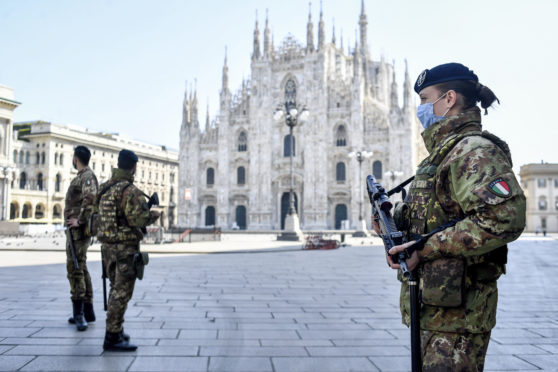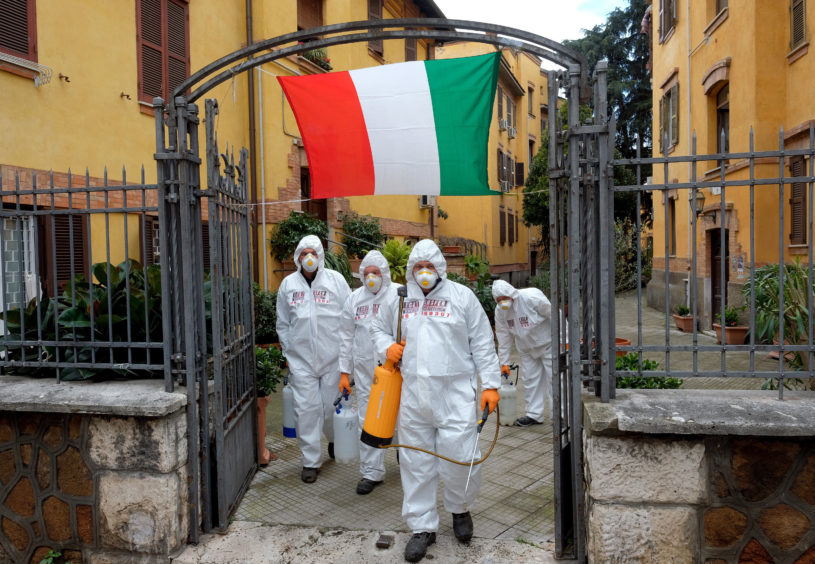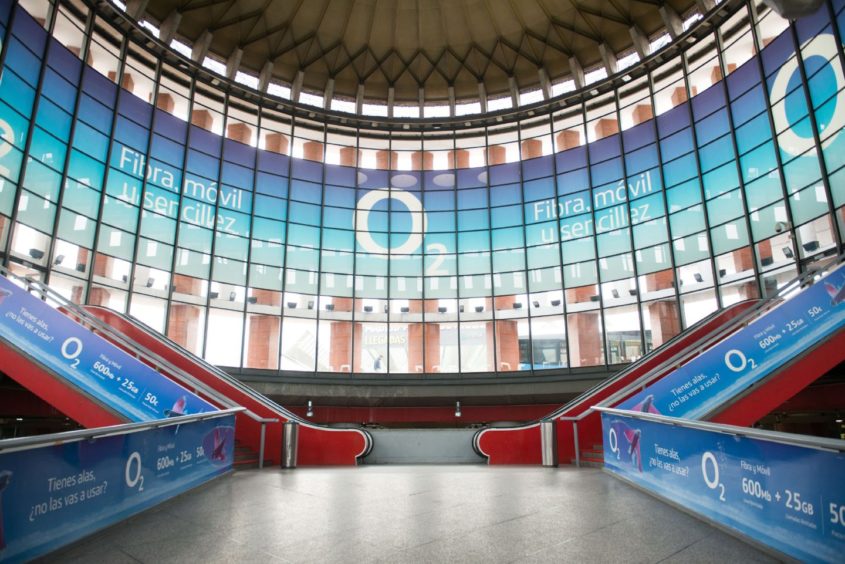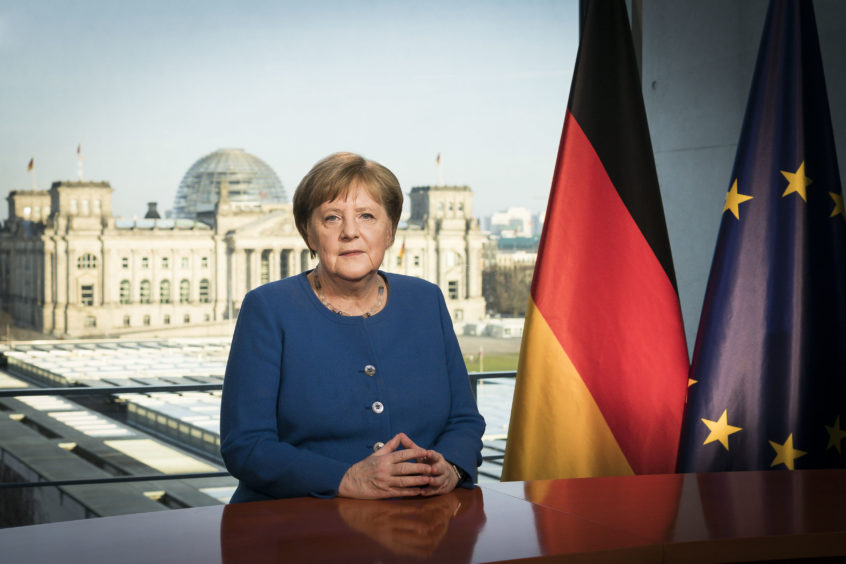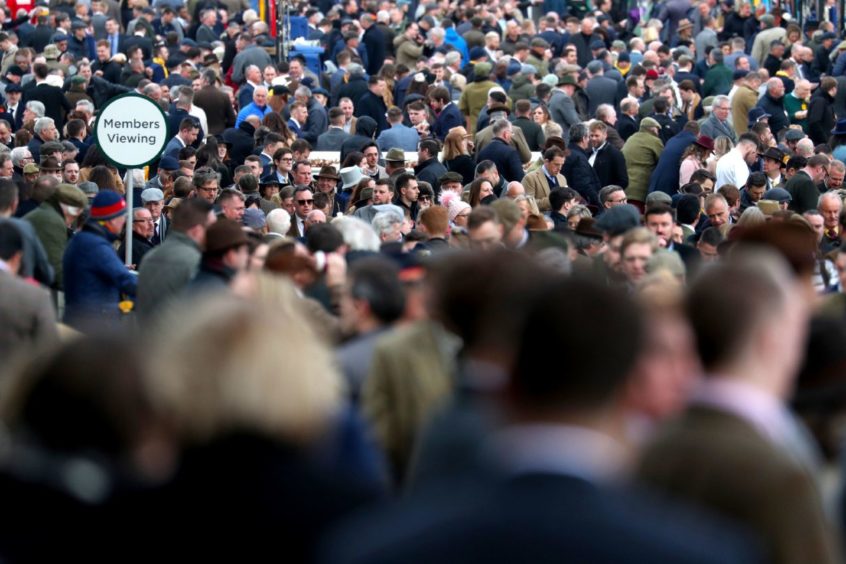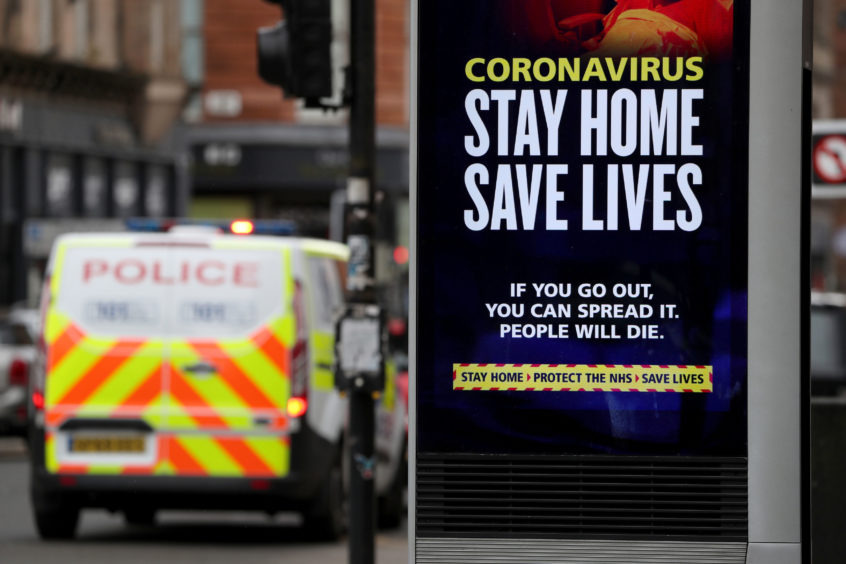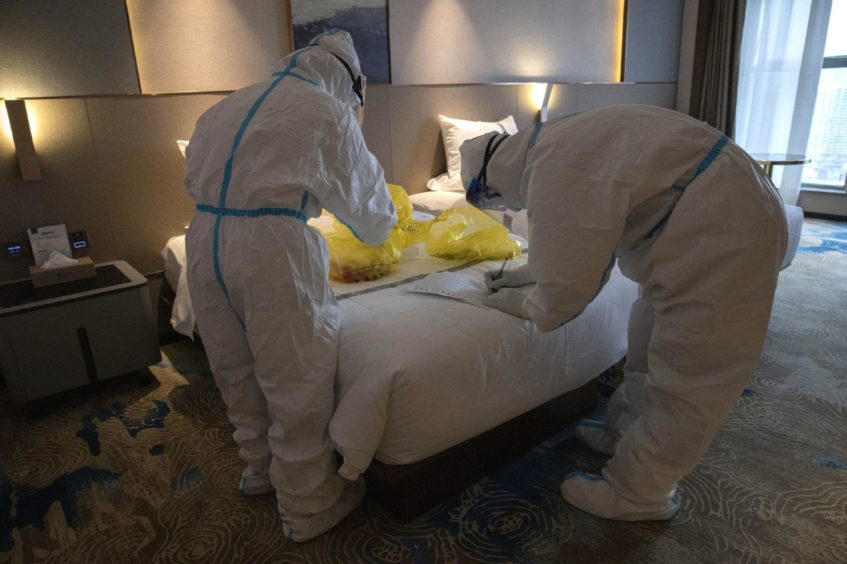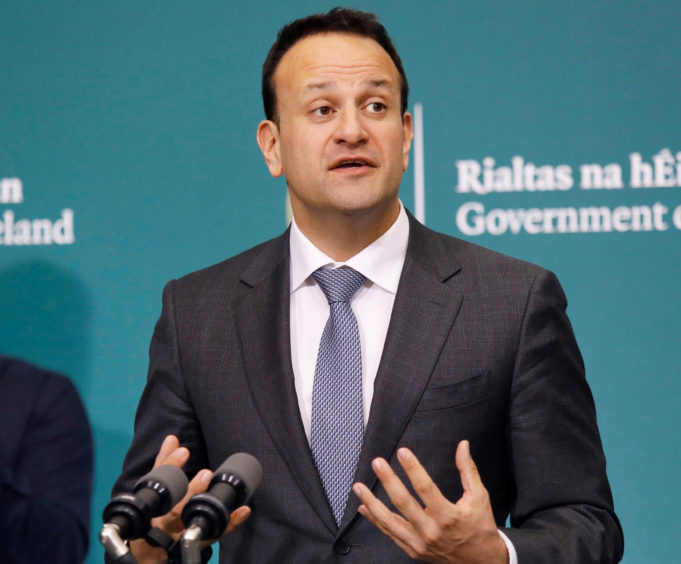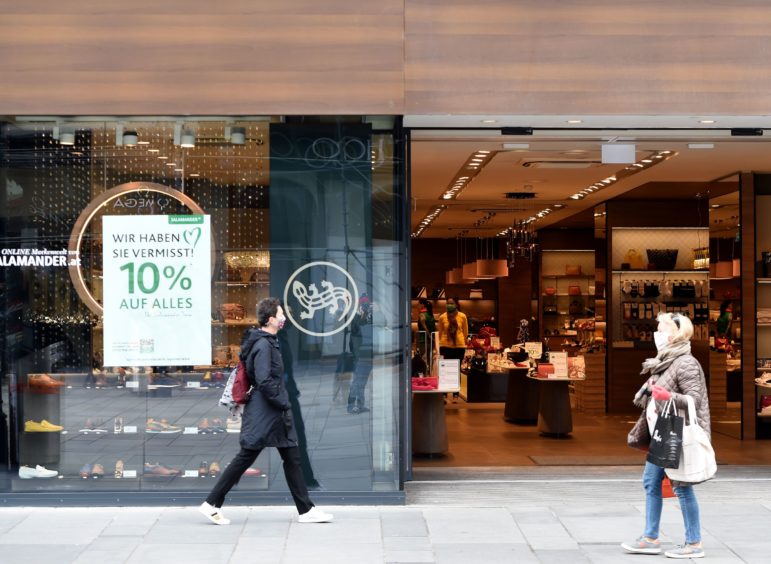As the UK Government prepares to publish its plans for gradually moving out of lockdown this week, we take a look at the first, tentative steps back to normality that are beginning to emerge from Europe.
Countries across the globe, including Austria, Italy and Germany, are beginning to gradually ease lockdown restrictions in a bid to kickstart economies again.
Unprecedented measures have been introduced in countries across the world in an attempt to fight the coronavirus pandemic as it sweeps the globe, devastating both families and economies, and leaving a legacy that is sure to be felt for decades.
Each country has differed in its approach and handling of the virus, dependent on individual circumstances, the personalities involved and how quickly they chose to act.
The scale and scope of the restrictions have been unprecedented and governments have been keen to look ahead at how they can begin to make cautious steps back to normality and get economies back up and running without risking the loss of human lives.
We look at some of the countries that have introduced measures, when they chose to do so and how those might be lifted.
Italy
Lockdown measures began to ease on May 4
On March 8 Italy placed up to 16 million people under quarantine in Lombardy and 14 other central and northern provinces, after seeing the largest number of coronavirus infections in Europe, with a total of 5,883 cases reported on March 7.
The measures, which included the closure of schools, gyms, museums, nightclubs and other venues, were the most radical taken outside of China at the time.
The following day, March 9, Italy announced a country-wide quarantine, in an attempt to try to contain the spread of the virus.
Nearly all commercial activity, except for supermarkets and pharmacies, was prohibited on March 11, with the Italian government closing all non-essential businesses and industries, and restricting the movement of people on March 21.
Public construction projects could resume activity as of April 27, while the majority of Italy’s industry will begin to restart from May 4 – a day after the lockdown expires.
Parks and public gardens will also reopen from May 4, allowing people to go for a walk or exercise outside so long as they maintain physical distancing.
On public transport, which will continue to run on a limited service, face masks will be mandatory. Face masks will also be required if Italians travel within their regions to visit relatives.
Museums, galleries, libraries and retailers will reopen on May 18 and bars, restaurants and hairdressers from June 1.
Under the plan, schools would remain closed until September.
Spain
Lockdown easing began on April 27
Spain announced a nationwide lockdown on March 14 in a bid to tackle the virus as it continued its deathly march across Europe.
Stringent restrictions were imposed nationwide with residents only allowed to leave their homes to purchase food and medicine.
Lockdown easing began on April 26 when children under 14 years old were allowed to go outside once per day with an adult, following six weeks confined indoors.
From May 2, adults were allowed to exercise between 6am and 10am and then from 8pm until 11pm. Children are allowed out between midday and 8pm, while the streets are open to older people and those who need assistance from 10am until midday and from 7pm until 8pm.
Small shops, such as bookshops, hardware stores and hair salons were due to reopen on May 4, serving customers by appointment, along with restaurants for the collection of takeaways.
Prime Minister Pedro Sánchez has announced that the wearing of face masks will be mandatory on public transport, with 14.5 million masks to be handed out across the country.
Germany
Restrictions started to ease from April 20, with further relaxation of measures on May 4
Unlike many other European countries, Germany has opted against a full lockdown but introduced restrictions on free movement and business closures on March 22.
From April 20, shops with up to 800 metres of space started trading and libraries, archives, zoos, botanical gardens, bike shops and bookshops were allowed to reopen too.
From May 4, schools will gradually start to reopen for children in the upper years of primary school and teenagers preparing for their end-of-school exams.
Other schools will open on May 11, with social distancing rules in place and likely reduced schedules.
Places of worship, museums, memorials, zoos and playgrounds can also reopen, or have already done so.
Barber shops and other salons are also set to reopen their doors after being closed for almost two months as part of the lockdown measures.
Wearing masks is obligatory on public transport and in shops.
Bars, sit-down restaurants, nightclubs and cinemas remain closed.
Mass gatherings are currently prohibited until August 31.
On March 3, Germany reported its lowest number of new coronavirus infections and deaths since March 31.
There were 890 additional infections, taking the total to 164,967, with deaths rising by 76 to 6,812.
France
Lockdown in place until May 11, with measures starting to ease from then
Another country hit hard by the coronavirus pandemic in Europe has been France, which had confirmed more than 168,000 cases and almost 25,000 deaths as of May 4.
France followed hot on the heels of Italy by introducing a nationwide lockdown on March 17.
People have been told they must stay at home except for urgent tasks such as food shopping or essential work, to seek medical care or exercise alone, until May 11.
The public will be able to move freely outside without having to fill in a form justifying their activities from May 11, except trips of more than 62 miles.
Lockdown measures will be lifted gradually with schools and some workplaces reopening on May 11 but social gatherings and leisure activities will remain banned until at least mid-July.
From May 11, members of the public should be able to access face masks, which will be compulsory on all transport, metros and buses.
The French government is calling on every company to provide workers with masks and will help small firms obtain them if required.
Travel between regions will be limited to professional or family reasons.
Gatherings of more than 10 people indoors or outdoors will remain banned and over-65s have been urged to remain cautious when going out.
The government will reassess at the end of May whether measures can be eased further to allow cafes and restaurants to be reopened.
France has decided to extend the state of health emergency imposed to fight the pandemic for two months until July 24.
A bill to be put to parliament on May 4 says plans this month to lift the public health emergency, which began on March 24, would be “premature” and “could see a rise of the outbreak”.
The draft bill also outlines the quarantine conditions for people coming to France from abroad. Travellers, including French citizens returning home, will face a two-week quarantine and possible isolation when they arrived in the country, health minister Olivier Véran said on May 2.
United Kingdom
Lockdown extended until at least May 7, with an update expected on May 10
The UK has faced mounting criticism for its response to the virus, with suggestions the government squandered a two-week advantage it had over countries including Italy and Spain.
Serious questions have been asked over why the Cheltenham Festival was allowed to go ahead on March 13, which was attended by more than 250,000 people over four days.
The images from the event met with shock and horror in other countries further ahead in the spread of the virus who warned governments to take the crisis seriously.
The government strategy followed a piecemeal approach with the public told on March 16 to avoid all non-essential contact with others and not to travel unless it was necessary.
By March 20, the advice was extended to close all bars, pubs, cafe and restaurants.
In a televised address to the nation on March 23, Prime Minister Boris Johnson announced three weeks of lockdown measures.
The public must stay at home, leaving the house only for food and other necessities, to exercise alone or with someone from the same household, providing care to others and travel to and from work.
Stereophonics play to a packed house in Cardiff last night….
Sleepwalking into a disaster! ⛔⚠️#coronapocolypse #coronavirus pic.twitter.com/KyL9Zh7t2X— Shane Cafferty (@Shane_caff) March 15, 2020
On April 16, Foreign Secretary Dominic Raab, deputising for Prime Minister Boris Johnson as he recovers from the virus, confirmed that the lockdown measures will be extended for at least three more weeks – until May 7.
He said: “Any change to our social distancing measures now would risk a significant increase in the spread of the virus.”
He added relaxing rules would cause a “second peak”, which would risk increasing deaths “substantially”.
The Department of Health said the Covid-19 death toll in hospitals in the UK had reached 28,446 as of May 3.
Prime Minister Boris Johnson is expected to reveal a road map on May 10, detailing exactly how restrictions will be eased in order for Britons to safely return to work among other things.
China
Lockdown lifted in Wuhan City, centre of the outbreak, on April 8.
The coronavirus outbreak was first identified in Wuhan, China, in December 2019 but has since spread around the globe, infecting 3,523,121 people, killing 247,752 and crippling major economies.
China first put Wuhan on lockdown on January 23, banning travel in and out of the city.
People were allowed out of their homes at first but this was later tightened and in some areas was limited to outings of just one family member every two days to buy necessities.
Another 14 cities in China were placed on lockdown on January 24 – with the stringent measures restricting the lives of 50 million people.
The nearly three-month lockdown in Wuhan finally ended on April 8, with Chinese officials hoping it will assure the public that life can return to normal.
However, restrictions continue with most shops, schools, cinemas and other entertainment venues remaining closed.
The virus claimed the lives of more than 3,000 people, according to official figures, and infected more than 82,000.
United States
Lockdown measures have already started to ease in individual states
The United States has become the global epicentre of the coronavirus pandemic, with almost 1.2 million confirmed cases and more than 68,000 deaths.
New York State alone has more than 320,000 cases and has seen more than 24,000 deaths but the number of new cases has reached a plateau for now.
More than 40 states imposed state-wide stay-at-home orders for their entire population, which includes avoiding non-essential travel.
Federal guidelines call for the number of cases to fall for 14 days straight before relaxing lockdown measures, but Texas and several other US states have forged ahead with reopening regardless.
Texas, for example, began relaxing restrictions on May 1, despite reporting a single-day high in deaths on April 30.
Shops, restaurants, shopping malls and cinemas have opened statewide at 25% capacity.
Meanwhile, bars, barbershops, hair salons and gyms remain closed, as do universities and schools.
Thousands of Americans, including those with serious illnesses such as cancer, have helped slow the spread of Coronavirus by delaying procedures and treatment.
We must safely reopen our country and hospitals soon—we owe it to those who have made these sacrifices. pic.twitter.com/RTonMrSjih
— The White House (@WhiteHouse) May 4, 2020
Anti-lockdown protesters have demonstrated at state capitols across the country in recent week against the lockdown measures.
On May 3 President Trump on Sunday reassured Americans that it is safe for states to reopen, offering support to protesters.
Speaking during a Fox News Channel virtual town hall at the Lincoln Memorial in Washington, he said: “I really believe that you can go to parks, you can go to beaches…(if) you stay away a certain amount.”
Ireland
Lockdown extended until May 18
Ireland acted faster than the United Kingdom in its introduction of restrictions to curb the spread of the virus.
The country made the decision to close schools on March 12 – a week before the UK and a range of social distancing measures were introduced in the immediate days following this announcement, including the closure of pubs and non-essential retail outlets.
On March 27, the taioseach, Leo Varadkar, said that from midnight people should stay at home, leaving only to shop for food and exercise briefly within 2km of their homes, for an initial period of two weeks.
However, the Irish Government announced on Saturday that it had extended its lockdown for another two weeks to May 18, when it will introduce a phased, five-stage exit over three months.
The taoiseach, Leo Varadkar, said while the death rate had flattened, it was still too dangerous to ease the lockdown, adding that two more weeks of tight restrictions to weaken the virus further were necessary to ensure “it doesn’t have the strength to make a comeback.”
The road map shows that in phase one, from May 18, outdoor meetings of up to four people from different households will be allowed, schools and college buildings will reopen to teachers only and some shops will reopen.
From June 8, phase two, libraries can reopen, small retail outlets can open with physical distancing measures in place, along with visits to a different household by groups of up to four people as long as a 2m distance is maintained.
In phase three, which will start on June 29, cafes and restaurants can reopen with physical distancing measures and strict cleaning protocols, those with low levels of interaction in their jobs can return to work and playgrounds can reopen.
Moving to phase four, small social gatherings by families and close friends, including small weddings and baptisms, will be allowed with a maximum number of attendees and physical distancing in place and those who cannot work from home can return to work.
Only during the final and fifth phase, from August 10, will some larger social gatherings be allowed, with restrictions in place, and schools and universities will reopen, on a phased basis.
The country had 21,176 confirmed cases as of May 3, with the virus claiming 1,303 lives.
Austria
Lockdown measures started to lift on April 14
Other European countries will be watching Austria with interest, as it emerged as one of the first nations to already start easing lockdown restrictions.
The country took its first, tentative steps towards normality from April 14, with small shops, public parks and DIY and gardening centres given permission to open on Tuesday morning, after being closed for almost a month.
The country is getting back to normal, with barbers, hair salons and shops with more than 400 square metres of sales area allowed to reopen, in a bid to restart the economy.
In a country of 8.9 million, confirmed infections stand at over 15,000 with deaths relatively low at 600.
Public parks also reopened on April 14 but with strict entrance controls to ensure not too many people gather in one space and people who do not live together are not allowed to stand or walk within one metre of each other.
By May 15, cafes and restaurants will be able to welcome customers again.
In restaurants, a maximum of four adults per table will be introduced and each table must be at least 1m apart.
Hotels can reopen on May 29 but the Austrian borders will remain closed.
Austrian residents will be required to wear masks in supermarkets, on public transport and in taxis, and to have them on before entering shops or vehicles.
Bandanas or scarfs wrapped adequately around the nose and mouth will also be accepted.
New Zealand
Lockdown measures in place but started to ease on April 28
New Zealand’s measures are being held up as a model for curbing the spread of the virus, with 1,487 confirmed cases and 20 deaths as of May 4.
The government lockdown, which included some of the toughest restrictions in the world at the time, was introduced on March 26 before a single death was recorded in the country, with all schools closing, all but essential shops shutting and borders secured.
The country, which has a population of almost five million, introduced its lockdown when the country had just 363 confirmed cases, while the UK’s came into effect when there were 6,650.
The country started to relax its strict lockdown on April 28, with residents able to travel to work, spend more time outside and order takeaway food for the first time in more than four weeks.
Speaking that day, Prime Minister Jacinda Ardern, who has been widely praised for her handling of the crisis, said the country had not eradicated Covid-19 but was working towards its elimination.
Schools around the country reopened on April 29 but the prime minister said very few children were expected to attend, as she was advising anyone who could work from home or study from home to do so.
